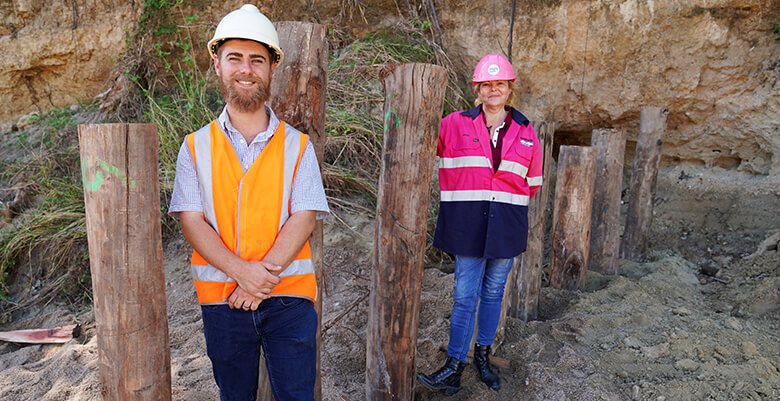Council use innovative solution to tackle waterway erosion
Date published: 7 June 2022
In a first for the Townsville region, Townsville City Council will use timber piles ranging from three to six metres tall as part of an innovative approach to control riverbank erosion at multiple sites along Black River and Crystal Creek.
The piles will be driven into the riverbed and arranged in multiple rows in front of and along sections of the waterways that have experienced significant bank erosion.
Community Health, Safety and Environmental Sustainability Committee chairperson Maurie Soars said the piles would help protect and repair the damaged riverbanks.
“The piles are arranged to slow down water and help build sediment along the eroding riverbanks,” Cr Soars said.
“Vegetation along the riverbanks is the best long-term solution to stop erosion, and these timber piles will help that vegetation establish over time.
“The pile fields will also support the passage of native fish and provide them with a habitat and help to limit the amount of sediment that washes into the ocean and impacts the Great Barrier Reef.”
“Preventing the amount of fine sediment reaching the Reef will improve water quality and help support corals and seagrasses to thrive.
“The timber piles will break down within the next 10 years, which will give native vegetation enough time to establish and act as the long-term erosion control measure.”
Mayor Jenny Hill said the Timber Pile Fields are an environmentally sustainable erosion control measure that was also helping to support First Nations Australian businesses.
“All the piles have been sourced from a Townsville business, which employs Traditional Owners on country, in Far North Queensland, to source the untreated timber”, Cr Hill said.
The $2.7 million projects at these sites are funded through the $9.4 million riverbank restoration program jointly funded by the Australian and Queensland governments through the Disaster Relief Funding Arrangements.
For more information on the riverbank restoration program, visit Riverbank Restoration Project.






